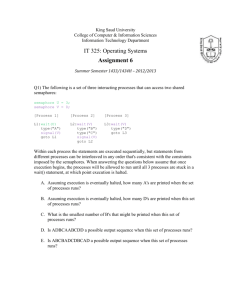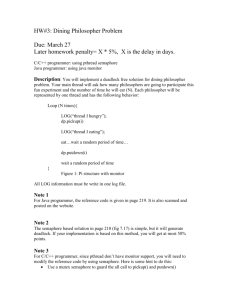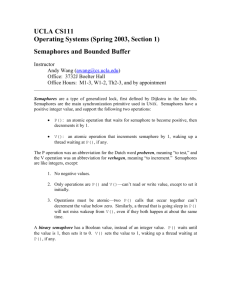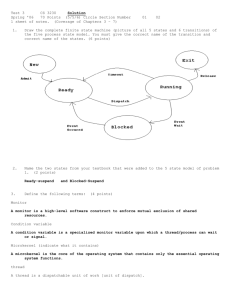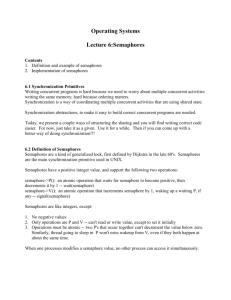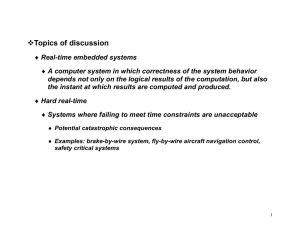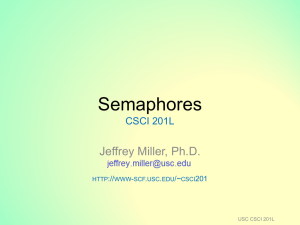Thread Synchronization
advertisement
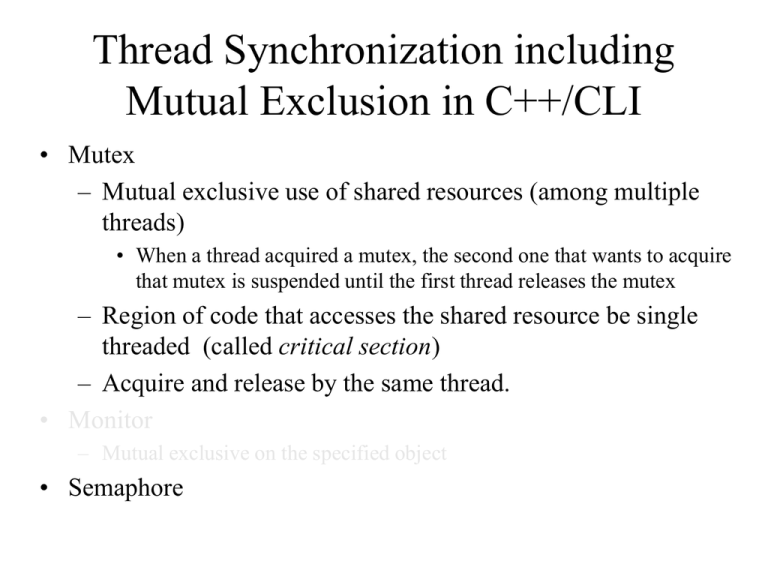
Thread Synchronization including
Mutual Exclusion in C++/CLI
• Mutex
– Mutual exclusive use of shared resources (among multiple
threads)
• When a thread acquired a mutex, the second one that wants to acquire
that mutex is suspended until the first thread releases the mutex
– Region of code that accesses the shared resource be single
threaded (called critical section)
– Acquire and release by the same thread.
• Monitor
– Mutual exclusive on the specified object
• Semaphore
Semaphores (1)
• Semaphore:
– Allow a maximum number of concurrent accesses to the
shared resources
– Does not enforce thread identity
– An integer value used for signalling among processes.
• A signal that many threads/processes read/update to
cooperate in order to enter a critical section.
– To enter a CS: check semaphore, either blocked, or go ahead
( need to set the signal to block others)
– To leave a CS, unset the signal to unblock others.
Semaphores (2)
• Three operations on a semaphore, all atomic:
– Initialize (to nonnegative)
– Decrement (P() operation)
• When each time a thread enters the semaphore
• If the value is zero, the subsequent P() requests block until
other threads release the semaphore
• Otherwise, the process continues execution
– increment (V() operation)
• When a thread releases the semaphore
• When all threads have released the semaphore, the count is
at the maximum value specified when the semaphore was
created.
Semaphores (3)
• Semaphore S = 3;
• P(S) { wait until S>0; S=S-1; }
• V(S) { S=S+1; }
Semaphores for Mutual Exclusion
Semaphore S = 1;
Shared Data
Thread 1
• P(S)
Thread 2
• P(S)
• Access Shared Data
• Access Shared Data
• V(S)
• V(S)
Semaphores for Synchronization
Semaphore S = 0;
Thread 1
Thread 2
• P(S)
• Print “AAAAA”
• Print “BBBBB”
• V(S)
Semaphores in C++/CLI
• Semaphore ^S = gcnew Semaphore(init, max);
• S->WaitOne();
• S->Release(); or
S->Release (count);
Examples
